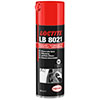The different types of lubricants
There are 3 main types of mechanical lubricant: oils, greases and pastes.
The main variables don't change for these 3 types of lubricant, but when choosing, viscosity and flash point must be taken into account.
Viscosity
Viscosity is considered the most important property of a lubricant, as it determines the lubricant's resistance and effectiveness in preventing friction between moving parts.
A higher-viscosity oil can withstand higher pressure without being expelled from lubricating surfaces. However, the oil's high internal friction may offer greater resistance to movement of lubricating parts.
Lower viscosity oil offers less resistance to moving parts, but the oil can be easily removed from lubricating surfaces.
Using an oil with an incorrect viscosity, whether too high or too low, can lead to a series of problems with the equipment.
Viscosity effects
- Low viscosity : Offers less resistance to moving parts, facilitating movement and reducing energy consumption. However, it can easily be pushed off surfaces, leading to insufficient lubrication, increased heat and accelerated wear.
- High viscosity : Creates a thick film between parts, offering superior wear protection. However, it can also lead to increased resistance to movement, higher energy consumption and start-up difficulties in cold conditions.
What is the viscosity index ?
The viscosity index of the oil is expressed by the values attached to the letter W. The numbers preceding the W refer to the cold dynamic viscosity.
The numbers following the letter W indicate the hot grade, otherwise known as the kinematic hot viscosity.
Oils
Oil lubricants, often simply referred to as "lubricating oil", are substances used to reduce friction, heat and wear between two surfaces. The use of lubricants is crucial in many fields, from automotive to industrial, domestic and specialized applications.
Here are some key points about oil lubricants:
Types
- Mineral : Derived from crude oil, these are the most common oils used in a variety of applications.
- Synthetics : Chemically manufactured to offer superior performance in extreme conditions such as very high or very low temperatures.
- Semi-synthetic : Combination of mineral and synthetic oils, offering a balance between performance and cost.
- Vegetal : Derived from plant sources, they are biodegradable and used in applications requiring environmentally-friendly products.
Applications
- Automotive : Engine oils, transmission oils, hydraulic fluids.
- Industrial : Lubrication of machines, hydraulic systems, gears, compressors.
- Specialized : Applications requiring specific properties, such as food equipment or extremely low-temperature applications.
The use of oil lubricants is essential to reduce wear and extend the life of mechanical components. They play a crucial role in reducing maintenance and operating costs, while improving the efficiency and reliability of equipment and vehicles.
Grease
Composed of a base oil, a thickener and, often, additives that improve certain properties such as resistance to pressure, water or corrosion.
Here are some key points about grease lubricants:
Thickeners and additives
Thickeners give grease its semi-solid consistency. They can be soap-based, such as lithium, calcium or aluminum, or soap-free, such as bentonite or polyurea.
Additives can include anti-wear agents, antioxidants, corrosion inhibitors and dropping point improvers. They are added to protect against extreme or specific conditions of use.
Applications
Grease is used in a wide variety of applications, from vehicle bearings to industrial equipment, from household appliances to tools.
It's particularly useful where lubricant needs to stay in place, or where it's difficult to apply oil regularly.
The grease adheres well to surfaces and works well under extreme load and temperature conditions.
Limitations
Greases are not suitable for all applications, especially at very high speeds or in environments where grease could contaminate products (as in the food industry).
In addition, the wrong choice of grease can cause compatibility problems with materials or other lubricants.
Maintenance
Good maintenance practice involves regularly checking the condition of the grease, and replacing or topping up as necessary to ensure continuous protection and prevent debris build-up or oxidation.
Paste
Paste lubricant is a specific form of lubricant designed to provide effective lubrication under difficult conditions.
Composition and properties
Paste lubricants generally consist of greases thickened with solid agents such as molybdenum disulphide (MoS2), graphite or PTFE. These solid agents provide a lubricating layer that can withstand high loads and extreme temperatures.
Applications
Paste lubricants are often used in industrial, mechanical and automotive applications. They are particularly useful for lubricating components subject to very heavy loads, oscillating or low-amplitude movements, or where operating conditions can lead to rapid degradation of liquid or conventional lubricants.
Benefits
The main advantage of paste lubricants is their ability to maintain effective lubrication in extreme conditions where other types of lubricant might fail. They help reduce wear, extend component life and improve machine reliability.
Maintenance
Although paste lubricants offer long-lasting protection, periodic maintenance and replacement are essential to ensure optimum performance.
Which lubricant to choose?
To choose the ideal lubricant, consider the specific application, compatibility with materials in contact (metals, plastics, rubber), environmental conditions (presence of water, temperature, food or pharmaceutical industry), and performance requirements (corrosion resistance, pressure load).
How do I apply lubricant?
Correct application of the lubricant is essential to maximize its effect.
Use a burette for oils, allowing precise distribution on bearings or chains.
For greases, a grease gun may be required to reach specific lubrication points under high pressure. Sprays are ideal for covering large surfaces or complex components.
Always follow the manufacturer's instructions for quantity and frequency of application, ensuring an adequate protective layer without overloading the mechanisms.
To discover our full range of lubricants and receive personalized advice on product selection and application, visit our dedicated page on 123Roulement.
 TIMING BELT PULLEY T2.5 2,5MM
TIMING BELT PULLEY T2.5 2,5MM  TIMING BELT PULLEY T5 5MM
TIMING BELT PULLEY T5 5MM  TIMING BELT PULLEY T10 10MM
TIMING BELT PULLEY T10 10MM  TIMING BELT PULLEY AT5 5MM
TIMING BELT PULLEY AT5 5MM  TIMING BELT PULLEY AT10 10MM
TIMING BELT PULLEY AT10 10MM  TIMING BELT PULLEY 3M 3MM
TIMING BELT PULLEY 3M 3MM  TIMING BELT PULLEY 5M 5MM
TIMING BELT PULLEY 5M 5MM  TIMING BELT PULLEY 8M 8MM
TIMING BELT PULLEY 8M 8MM  TIMING BELT PULLEY 14M 14MM
TIMING BELT PULLEY 14M 14MM  TIMING BELT PULLEY L 9,52MM
TIMING BELT PULLEY L 9,52MM  TIMING BELT PULLEY XL 5,08MM
TIMING BELT PULLEY XL 5,08MM  TIMING BELT PULLEY H 12,7MM
TIMING BELT PULLEY H 12,7MM  DEEP GROOVE BALL BEARING
DEEP GROOVE BALL BEARING  NEEDLE ROLLER BEARING
NEEDLE ROLLER BEARING 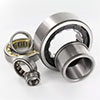 ROLLER BEARING
ROLLER BEARING  HOUSED BEARING
HOUSED BEARING 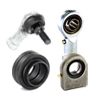 ROD END
ROD END  LINEAR TRANSMISSION
LINEAR TRANSMISSION  OTHER BEARINGS
OTHER BEARINGS  GEARBOX BEARING
GEARBOX BEARING  AGRICULTURAL BEARINGS
AGRICULTURAL BEARINGS 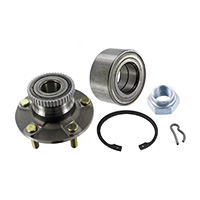 WHEEL BEARING
WHEEL BEARING  SINGLE ROW
SINGLE ROW  DOUBLE ROW
DOUBLE ROW  CERAMIC BEARING
CERAMIC BEARING  THRUST BALL BEARING
THRUST BALL BEARING  SELF ALIGNING BALL BEARING
SELF ALIGNING BALL BEARING  CASTOR BEARING
CASTOR BEARING  HIGH TEMPERATURE
HIGH TEMPERATURE  CAM FOLLOWER
CAM FOLLOWER  TRACK ROLLER
TRACK ROLLER  MAST GUIDE BEARING
MAST GUIDE BEARING  BALL BEARING RETAINER
BALL BEARING RETAINER  DRAWN CUP ROLLER BEARING
DRAWN CUP ROLLER BEARING 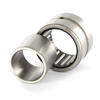 NEEDLE ROLLER BEARING
NEEDLE ROLLER BEARING  AXIAL NEEDLE ROLLER
AXIAL NEEDLE ROLLER  INNER RING
INNER RING  NEEDLE ROLLER CAGE
NEEDLE ROLLER CAGE  DRAWN CUP ROLLER CLUTCHES
DRAWN CUP ROLLER CLUTCHES  TAPERED ROLLER BEARING
TAPERED ROLLER BEARING  ROLLER BEARING
ROLLER BEARING  YOKE TYPE TRACK ROLLER
YOKE TYPE TRACK ROLLER  SPHERICAL ROLLER BEARING
SPHERICAL ROLLER BEARING  THRUST ROLLER BEARING
THRUST ROLLER BEARING  ROLLER BEARING CAGE
ROLLER BEARING CAGE  RAW CONE
RAW CONE  RAW CUP
RAW CUP  HOUSED BEARING 0 BOLT
HOUSED BEARING 0 BOLT  HOUSED BEARING 1 BOLT
HOUSED BEARING 1 BOLT  HOUSED BEARING 2 BOLTS
HOUSED BEARING 2 BOLTS  HOUSED BEARING 3 BOLTS
HOUSED BEARING 3 BOLTS  HOUSED BEARING 4 BOLTS
HOUSED BEARING 4 BOLTS  HOUSED BEARING ACCESSORIES
HOUSED BEARING ACCESSORIES  TSM ROD END
TSM ROD END  TSF ROD END
TSF ROD END  GE ROD END
GE ROD END  DIN ROD END
DIN ROD END  GEG ROD END
GEG ROD END  SQ ROD END
SQ ROD END  SA ROD END
SA ROD END  SSR ROD END
SSR ROD END 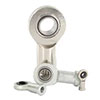 SI ROD END
SI ROD END  GEEW ROD END
GEEW ROD END  SQZ ROD END
SQZ ROD END 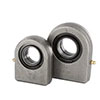 TPN ROD END
TPN ROD END 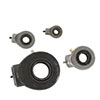 TAC ROD END
TAC ROD END  SQL ROD END
SQL ROD END  GEK ROD END
GEK ROD END 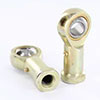 PHS ROD END
PHS ROD END 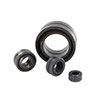 GEZ ROD END
GEZ ROD END  GEEM ROD END
GEEM ROD END  TAPR ROD END
TAPR ROD END  GAC ROD END
GAC ROD END 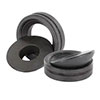 GX ROD END
GX ROD END  OTHER ROD ENDS
OTHER ROD ENDS  LINEAR BEARING
LINEAR BEARING  SEAL
SEAL  SEALING ACCESSORIES
SEALING ACCESSORIES  O-RING SEAL
O-RING SEAL  ROTARY SHAFT SEAL
ROTARY SHAFT SEAL  HYDRAULIC SEAL
HYDRAULIC SEAL  V-RING SEAL
V-RING SEAL  X-RING SEAL
X-RING SEAL  SEALING WASHER
SEALING WASHER 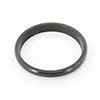 WIPER SEAL
WIPER SEAL  ROPE SEAL
ROPE SEAL 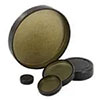 VK EC END COVER
VK EC END COVER  NILOS SEALS
NILOS SEALS 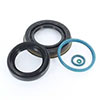 OTHER SEALS
OTHER SEALS  PISTON SEAL
PISTON SEAL 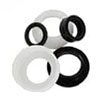 PNEUMATIC SEAL
PNEUMATIC SEAL  SEAL ASSORTMENT
SEAL ASSORTMENT  AUTOMOTIVE SEAL
AUTOMOTIVE SEAL  PTFE SEAL
PTFE SEAL  BACK-UP RING
BACK-UP RING  SPEEDI-SLEEVE
SPEEDI-SLEEVE  BELT
BELT  ROLLER CHAIN
ROLLER CHAIN  SPROCKET
SPROCKET 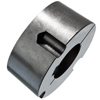 TAPER BUSHING
TAPER BUSHING 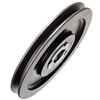 V-GROOVED PULLEY
V-GROOVED PULLEY 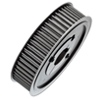 TIMING BELT PULLEY
TIMING BELT PULLEY  RACK & SPUR GEAR
RACK & SPUR GEAR  RIBBED BELT PULLEY
RIBBED BELT PULLEY  V-BELT
V-BELT  RAW EDGE COGGED V-BELT
RAW EDGE COGGED V-BELT  TOOTHED BELT
TOOTHED BELT  POLY-V BELT
POLY-V BELT  HEXAGONAL BELT
HEXAGONAL BELT  VARIATOR BELT
VARIATOR BELT  BELT ACCESSORIES
BELT ACCESSORIES  SIMPLEX
SIMPLEX  DUPLEX
DUPLEX  TRIPLEX
TRIPLEX  CONNECTING LINK
CONNECTING LINK  OFFSET LINK
OFFSET LINK  SIMPLEX SPROCKET
SIMPLEX SPROCKET  DUPLEX SPROCKET
DUPLEX SPROCKET  TRIPLEX SPROCKET
TRIPLEX SPROCKET  IDLER SPROCKET
IDLER SPROCKET 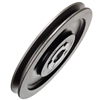 V-GROOVED PULLEY SPA
V-GROOVED PULLEY SPA 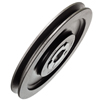 V-GROOVED PULLEY SPB
V-GROOVED PULLEY SPB 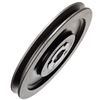 V-GROOVED PULLEY SPC
V-GROOVED PULLEY SPC 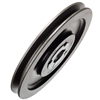 V-GROOVED PULLEY SPZ
V-GROOVED PULLEY SPZ  SPUR GEAR
SPUR GEAR 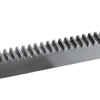 GEAR RACK
GEAR RACK  RIBBED BELT PULLEY PL
RIBBED BELT PULLEY PL  RIBBED BELT PULLEY PJ
RIBBED BELT PULLEY PJ  LUBRICANT
LUBRICANT 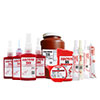 ADHESIVE
ADHESIVE  PENETRANT
PENETRANT  LUBRICANT
LUBRICANT  GREASE
GREASE  DEGREASER
DEGREASER  CLEANER
CLEANER 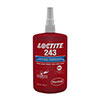 THREADLOCKER
THREADLOCKER 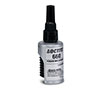 GLUE
GLUE 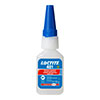 ADHESIVE
ADHESIVE 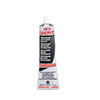 GASKET SEALER
GASKET SEALER 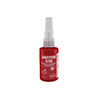 GASKET SEALING
GASKET SEALING  CYLINDRICAL BUSHES
CYLINDRICAL BUSHES  RETAINING RING
RETAINING RING  BALLS AND NEEDLES
BALLS AND NEEDLES  WASHER
WASHER  TOOLS
TOOLS  ANTI VIBRATION
ANTI VIBRATION  LOCK NUT
LOCK NUT  ADAPTER SLEEVE
ADAPTER SLEEVE  PAP BUSHES
PAP BUSHES  FLANGED BUSH PAF
FLANGED BUSH PAF  BRONZE BUSHES WITH COLLAR
BRONZE BUSHES WITH COLLAR  BRONZE BUSHES
BRONZE BUSHES  EXTERNAL RETAINING RING
EXTERNAL RETAINING RING  INTERNAL RETAINING RING
INTERNAL RETAINING RING  E-CLIP
E-CLIP  CIRCLIP PLIERS
CIRCLIP PLIERS  NEEDLE
NEEDLE  BALLS
BALLS  BALL BEARING RETAINER
BALL BEARING RETAINER  THRUST WASHER
THRUST WASHER  LOCK WASHER
LOCK WASHER  WAVE SPRING WASHER
WAVE SPRING WASHER  COMPRESSION WAVE SPRING WASHER
COMPRESSION WAVE SPRING WASHER  MULTIWAVE COMPRESSION SPRINGS
MULTIWAVE COMPRESSION SPRINGS  OVERLAP WAVE SPRING WASHER
OVERLAP WAVE SPRING WASHER  CURVED SPRING WASHER
CURVED SPRING WASHER  SPRING DISC DIN2093
SPRING DISC DIN2093  FINGER SPRING WASHER
FINGER SPRING WASHER  SPLIT WAVE SPRING WASHER
SPLIT WAVE SPRING WASHER  WAVE SPRING ROUND WIRE
WAVE SPRING ROUND WIRE 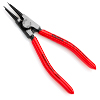 CIRCLIP PLIERS
CIRCLIP PLIERS  DIMENSIONAL MEASUREMENT
DIMENSIONAL MEASUREMENT 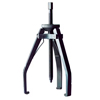 MOUNTING - DISMOUNTING
MOUNTING - DISMOUNTING 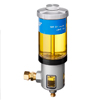 GREASE - LUBRICATION
GREASE - LUBRICATION  ALIGNMENT - INSPECTION
ALIGNMENT - INSPECTION  MM ANTI-VIBRATION
MM ANTI-VIBRATION  MF ANTI-VIBRATION
MF ANTI-VIBRATION  PM ANTI-VIBRATION
PM ANTI-VIBRATION  FF ANTI-VIBRATION
FF ANTI-VIBRATION  PF ANTI-VIBRATION
PF ANTI-VIBRATION  ANTI-VIBRATION MACHINE BASE
ANTI-VIBRATION MACHINE BASE  PMP ANTI-VIBRATION
PMP ANTI-VIBRATION  ANTI VIBRATION DIABOLOS
ANTI VIBRATION DIABOLOS  PFP ANTI-VIBRATION
PFP ANTI-VIBRATION 